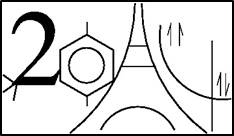Not taking into account the mechanisms of adsorption/ desorption of the atoms and molecules at the surfaces available in the interstellar environment could lead to serious flaws in the founding hypotheses of astrochemistry. It is fundamental to determine how much gas-grain interaction impacts other chemical processes (reactivity, selectivity and so on). Database of reliable adsorption energies of interstellar species for the different surfaces available in space is required.
In this work theoretical end experimental approaches are used complimentary to identify the adsorption energy, a single parameter quantifying the equilibrium between the adsorbed and free species.
As an example, Ar/Kr/Xe adsorption on water ice is studied, which is relevant for planetology case (noble gas depletion in Titan atmosphere). Theoretical study of Na/K adsorption on water ice is also presented, important for comet study. Further direction of research is the adsorption of organic molecules.
From the side of the theoretical chemistry, periodic DFT calculations with VASP code are performed. Grimme dispersion correction is used to account for the Van-der-Waals interaction, which plays a significant role in adsorption.
The experimental part consists of doing the temperature-programmed desorption to probe the adsorption energy.

 PDF version
PDF version
